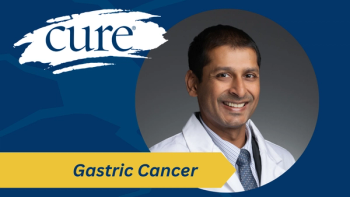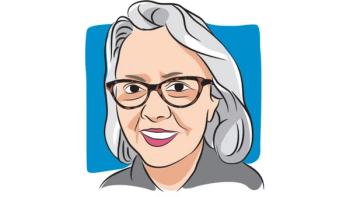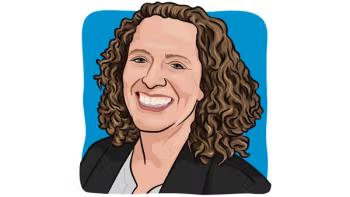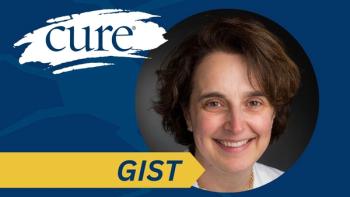
Expanding Clinical Trial Access for Patients With Cancer
Key Takeaways
- Expanding clinical trial access locally reduces logistical and financial barriers, making participation feasible for underserved populations.
- Addressing myths about clinical trials helps patients understand their role as integral, not last-resort, treatment options.
It is vital that clinical trials for patients with cancer shift to a more representative approach to accurately reflect real-world patient populations.
It is imperative that clinical trials for patients with cancer shift to a more representative approach to accurately reflect real-world patient populations in order to improve access to care for underserved populations, according to research published by the ACCC Community Oncology Research Institute.
“We want to make sure that trials are as accessible as possible, and that means… [having] access [trials] where you live without the logistical or financial barriers that can come with needing to travel for a trial,” Kimberly (Cary) Demirhan, a registered nurse, emphasized in an interview with CURE.
In the interview, Demirhan sat down to discuss the importance of clinical trial accessibility for patients with cancer. She highlighted how researchers are aiming to make these studies more accessible, common misunderstandings about clinical trial participation and the importance of including those who may be older or live in rural areas in these studies.
She is the assistant director of Education Programs at the Association of Cancer Care Centers and works as a PRN Heart Transplant nurse at MedStar Washington Hospital Center, located in Washington, D.C.
CURE: How can researchers work to make trials more accessible to patients receiving care in their own communities?
Demirhan: We want to make sure that trials are as accessible as possible, and that means not necessarily having to go to large academic centers to get treatment or to be enrolled in trials, but to access them where you live without the logistical or financial barriers that can come with needing to travel for a trial.
As an organization, we focus on the professional capacity side of that, looking at how to build up community research sites to be able to do clinical trials. We work on preparing them to build their infrastructure and providing them with the education, resources and mentorship they need to be able to do research in the community.
Really, the goal of our organization is to make trials accessible for community-based patients, so they’re not having to leave their home or travel long distances. Rethinking the clinical trial structure, and how we actually deliver trials, is really important in this conversation. That includes assessing how frequently patients actually need to be seen in person, what care can be delivered through telehealth, whether they can get their labs done through local lab draws, or if they can wear digital tools or patient monitoring devices so they’re not having to travel long distances just to enroll or stay in a trial.
What are some common myths or misunderstandings about clinical trial participation, and how is your research helping to clear these concerns?
There are a lot of myths about clinical trials that circulate. Some of the most common ones are that clinical trials are a last resort for patients, or that enrolling in a trial means you will only get a placebo instead of real treatment. Another misunderstanding is that participating in a clinical trial requires you to leave your regular doctor, your cancer team or the care providers you trust.
Part of our work involves addressing these myths. Clinical trials are often the first-line treatment for many diseases today. They focus on treating the patient where they are and ensuring the care they receive is high-level, not substandard. Many patients in trials receive additional care in terms of follow-up and management. Also, many trials don't use placebos. Instead, they compare the new interventional therapy with the current standard of care.
We work with patients to help them understand this. A big part of this is talking to patients early. We've been working with many of our providers to make sure we're discussing clinical trials not only at the exact time a patient might need to enroll, but at the time of diagnosis or even before. This helps patients understand that clinical trials are not a last resort; they are an integral part of our healthcare infrastructure. Often, when patients enroll, it's not because we don't know if a drug works. Rather, we are ensuring it is safe and can be applied to a wider audience, and that patients are receiving a high level of care throughout the process.
A major goal of your work is to ensure that trials reflect real-world patients . What does that mean for patients who may have other health conditions, be older or live in rural areas?
Our goal with this work is to make sure that clinical trials are accessible to everyone. It's important that the patients we include in these trials represent all different walks of life, including various ethnicities, genders and those exposed to different environmental factors.
Historically, trials have had a high rate of enrollment among older white males, but not every disease affects only this demographic. We want to broaden the scope of who enrolls in trials to include people of different ethnicities and genders. This ensures that when we assess the safety and efficacy of these trial drugs, the results are applicable to everyone who might experience a particular disease or cancer. The drugs must be safe for all.
Expanding access is crucial so we have a wide variety of patients enrolled in trials. This is to reflect the diverse population of patients who are actually dealing with the disease and will be taking the medication in the real world. Ultimately, our goal is to ensure the medication is safe for everyone.
Clinical trial navigators are a key part of expanding access. Can you explain how they help patients through the clinical trial process?
A [consortium] strongly supports the work of clinical trial navigators. These trained professionals guide patients through the complex trial process, from initial eligibility screening to follow-up care after the trial.
Navigators serve as a central point of contact for patients. They are the one person you can call with questions, and they help you navigate logistical, financial and emotional barriers to trial participation. They act as a liaison between the patient, the cancer care team, and the research staff, connecting all these groups to ensure the patient's experience is streamlined throughout the entire process.
We have seen that sites that use clinical trial navigators have increased patient retention. It's easier for patients to participate when they have one person guiding them through the entire trial to ensure they get the care they need. This also reduces confusion about who to call for different issues, such as reporting an adverse event, asking a scheduling question, or understanding the next step in the process. The navigator is there to guide the patient and make the trial process easier for both them and the cancer care team.
Our organization is highly supportive of this role and is invested in expanding access to it as we build our clinical trials.
Reference
- “Bringing Cancer Research to the Community: Strategic Approaches to Representative Oncology Clinical Trial Design,” by Dr. Nicole A Colwell, et al. ACCC Community Oncology Research Institute.
Transcript has been edited for clarity and conciseness
For more news on cancer updates, research and education, don’t forget to




